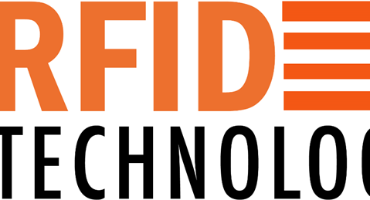RFID Technology
RFID involves the use of electromagnetic fields to automatically identify and track tags attached to objects. These tags contain electronically stored information.Components:
UHF Tags Labels: These are attached to the assets and come in two types: passive (no battery) and active (battery-powered).
UHF RFID Readers: These devices emit radio waves and receive signals back from the UHF RFID label tags.
UHF RFID Antenna: Facilitates communication between the tag and the reader.
Advantages:
Speed: RFID readers can scan multiple tags simultaneously and quickly, much faster than barcode scanning.
Accuracy: High precision in reading, reducing human error.
Non-line-of-sight: Tags can be read without direct line-of-sight, allowing for more flexible and efficient scanning.
Durability: UHF RFID label tags are generally more robust than barcodes, making them suitable for harsh environments.
AI Technology
AI involves the use of algorithms and machine learning to analyze data, make decisions, and predict future trends.Components:
Machine Learning: Algorithms that learn from data to make predictions or decisions.
Data Analytics: Tools and techniques to analyze vast amounts of data for actionable insights.
Computer Vision: Allows machines to interpret and understand visual information from the world.
Advantages:
Predictive Analytics: AI can forecast stock levels, demand, and potential shortages.
Automation: AI can automate routine tasks such as reordering stock and updating inventory.
Anomaly Detection: AI can detect inconsistencies or unusual patterns in the data, signaling potential issues or opportunities.
Optimization: AI can optimize supply chain processes, improving overall efficiency.
Integration of RFID and AI
When combined, RFID and AI technologies offer a powerful solution for asset tracking and stock control:
Real-Time Asset Tracking:
RFID provides real-time data on the location and status of assets.
AI processes this data to monitor asset movement, utilization, and condition.
This integration ensures that assets are accurately tracked throughout their lifecycle, reducing loss and theft.
Automated Stock Control:
RFID systems automatically update inventory counts as items are moved in and out of storage or through various points in the supply chain.
AI analyzes this data to predict stock levels, reorder items as needed, and manage stock rotations.
This reduces the need for manual stock checks and minimizes human error.
Enhanced Decision Making:
AI can analyze RFID data to provide insights into inventory turnover rates, stock aging, and demand patterns.
Managers can make informed decisions based on real-time and predictive analytics, improving operational efficiency and customer satisfaction.
Operational Efficiency:
RFID speeds up the scanning process, reducing the time required for inventory audits and asset tracking.
AI-driven automation streamlines processes such as order fulfillment, stock replenishment, and distribution.
Cost Savings:
Reduced labor costs due to automation.
Minimized stockouts and overstock situations through precise demand forecasting.
Lowered asset loss and improved asset utilization rates.
Improved Customer Service:
Faster response times due to real-time inventory visibility.
Accurate order fulfillment and timely delivery.
Enhanced ability to meet customer demand through better stock management.
Practical Applications
Retail:
Automated checkout processes using RFID.
AI-driven demand forecasting to optimize stock levels.
Enhanced inventory management across multiple stores and warehouses.
Manufacturing:
Real-time tracking of raw materials and finished goods.
Predictive maintenance of equipment using AI analytics on RFID data.
Streamlined supply chain operations.
Healthcare:
Tracking medical equipment and supplies.
Managing pharmaceutical inventory and ensuring compliance with regulations.
Enhancing patient care through efficient resource allocation.
Logistics and Warehousing:
Improved inventory accuracy and reduced shrinkage.
Optimized warehouse operations with real-time data and AI-driven insights.
Enhanced tracking of shipments and delivery vehicles.
With the integration of RFID and AI technologies is transforming asset tracking and stock control by providing faster, more accurate, and automated solutions. These advancements lead to significant improvements in operational efficiency, cost savings, and customer satisfaction, making them invaluable tools for modern businesses.



